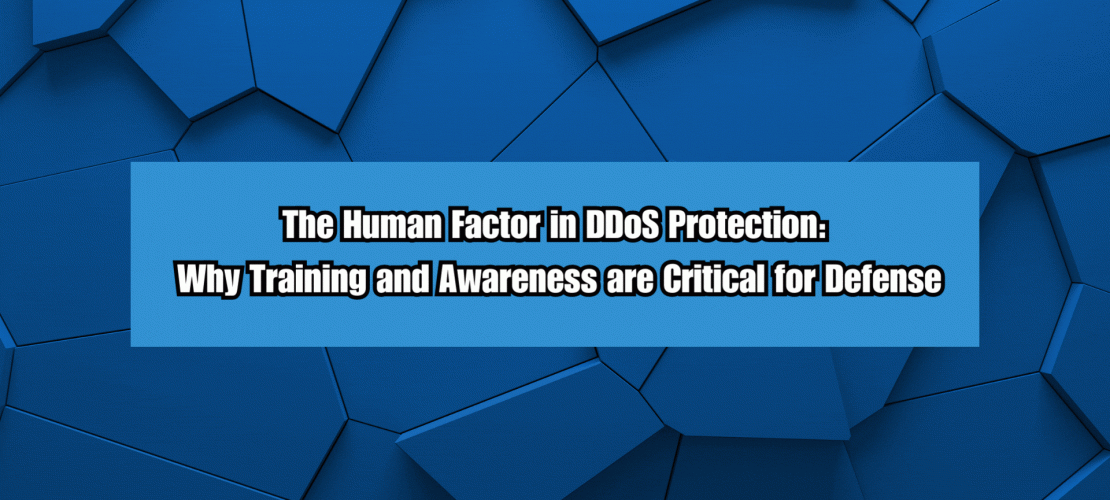The world of cybersecurity is constantly evolving, with new threats and vulnerabilities emerging every day. One of the most insidious and persistent threats is distributed denial of service (DDoS) attacks, which can wreak havoc on networks and websites, causing downtime, lost revenue, and damage to a company’s reputation. While technological solutions like firewalls, filters, and DDoS mitigation services are critical components of a comprehensive defense strategy, they can only go so far. The human factor in DDoS protection is equally important, and often overlooked. In this blog post, we’ll explore why training and awareness are critical for effective DDoS defense.
Understanding the Human Factor in DDoS Protection
DDoS attacks can take many forms, from simple volumetric attacks to more sophisticated application-layer attacks that exploit vulnerabilities in web applications or APIs. While technological solutions can help mitigate these attacks, they can’t prevent them entirely. That’s where the human factor comes in. Employees, contractors, and other personnel who interact with a company’s IT systems are all potential vectors for DDoS attacks. They may inadvertently download malware, click on phishing emails, or fail to follow best practices for password management and network security. Even well-meaning employees can unknowingly put a company’s IT systems at risk by using unsecured Wi-Fi networks or accessing sensitive data from unsecured devices.
Training and Awareness as Critical Components of DDoS Defense
To effectively defend against DDoS attacks, companies need to prioritize training and awareness as critical components of their cybersecurity strategy. This includes regular training sessions for employees, contractors, and other personnel who have access to the company’s IT systems. Training should cover a range of topics, including:
- Phishing Awareness: Employees should be trained to recognize phishing emails and other social engineering tactics that can be used to trick them into downloading malware or revealing sensitive information.
- Password Management: Passwords are a critical line of defense against DDoS attacks. Employees should be trained on best practices for password creation, such as using strong, complex passwords and not reusing passwords across multiple accounts.
- Network Security: Employees should be trained on best practices for network security, such as not using unsecured Wi-Fi networks or accessing sensitive data from unsecured devices.
- Incident Response: Employees should be trained on how to recognize and report suspicious activity, as well as how to respond in the event of a DDoS attack.
In addition to regular training sessions, companies should also conduct periodic cybersecurity awareness campaigns to keep employees informed and engaged. These campaigns can include posters, emails, and other communications that highlight the importance of cybersecurity and remind employees of best practices for protecting the company’s IT systems.
Benefits of Prioritizing Training and Awareness for DDoS Protection
By prioritizing training and awareness as critical components of DDoS defense, companies can reap a range of benefits, including:
- Reduced Risk of DDoS Attacks: By training employees to recognize and avoid common DDoS attack vectors, companies can reduce the likelihood of successful attacks.
- Faster Detection and Response: When employees are trained to recognize and report suspicious activity, companies can respond more quickly to DDoS attacks, minimizing their impact and reducing downtime.
- Improved Incident Response: By training employees on how to respond in the event of a DDoS attack, companies can improve their incident response capabilities, ensuring a more effective and coordinated response.
- Improved Compliance: Many regulatory frameworks require companies to prioritize cybersecurity training and awareness. By complying with these requirements, companies can avoid costly fines and reputational damage.
The human factor in DDoS protection is a critical, yet often overlooked component of cybersecurity. By prioritizing training and awareness as part of their DDoS defense strategy, companies can reduce the risk of successful attacks .The human factor in DDoS protection is a critical, yet often overlooked component of cybersecurity. By prioritizing training and awareness as part of their DDoS defense strategy, companies can reduce the risk of successful attacks.




